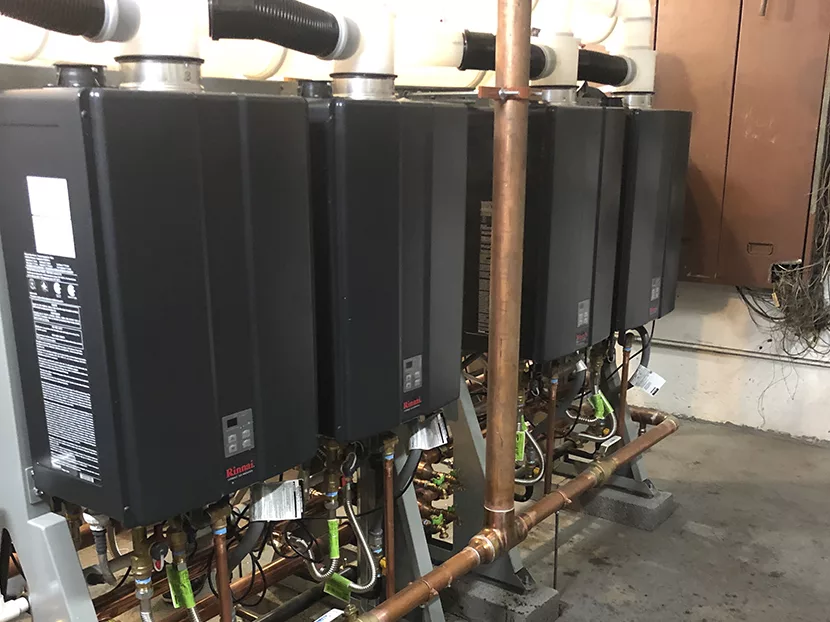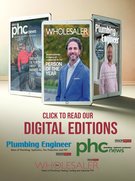The St. Lawrence Health System, based in Potsdam, New York. operates two hospitals and several extension outpatient facilities. Aware of the many benefits of tankless technology previously installed at the healthcare provider’s Canton, New York, outpatient facility, Andy Leonard, president of ENI Mechanical, knew that tankless would meet greater hot water demands at its larger inpatient facility.
“Gouverneur Hospital [Gouverneur, New York] had just built an additional wing and continued to supply heat and hot water to it with its existing hydronic and domestic water system,” Leonard explains.
This system was comprised of a 5.4M BTW boiler that fed a 6,000-gallon storage tank and an older, inefficient 1.7M BTU back-up boiler. Due to the additional workload, the boiler system was unable to keep up, and the hospital was experiencing situations in which the water would not keep up to the required temperature setting.
“The entire set-up had become increasingly unreliable,” Leonard says. “The hospital maintenance staff was having to work continually on the system to ensure that hot water was restored and at least one of the two boilers was operational.”
Efficiency gains
Howland Pump and Supply, a major New York State distributor based in Ogdensburg, New York, was brought in to show the hospital various options available, if they moved to a separate modular boiler system for their hydronic heating needs in the winter and a tankless system to supply their domestic hot water year-round.
After deciding this was the best option, piping schematics for the domestic hot water system were produced by John Clark with Brooks Washburn Architect, Potsdam New York.
“Going from four recirculation zones and pumps to one while eliminating the need for storage reduced an unbelievable amount of inefficiency and operating cost,” Clark says. “Plus the hospital was making efficiency improvements moving from 80 percent efficient boilers to 97 percent efficiency with Rinnai tankless.”
Mike Bajgot, Rinnai’s territory sales manager for Upstate New York, and Corey Nattinger, Rinnai’s commercial business manager, walked the hospital building to do a fixture count and size the job.
It was determined that four Rinnai TRS04CUiN Freestanding Tankless Rack Systems with a total of 16 engines supplying 3.184M BTU was required and would still provide enough capacity for future growth.
The hospital expects close to $18,000 a year in energy, maintenance and repair savings and have the added benefit of increased redundancy and remote monitoring.
“Using the Rinnai Control-R Mobile App,” Nattinger adds, “the maintenance staff can control and monitor the entire hot water system remotely. With the redundancy of having 16 operable units, they are not having to respond to emergency ‘no hot water’ situations like they were before.”
Kyle Besaw, Howland Pump and Supply, appreciates how everything came together.
“We ended up selecting polypropylene common venting that we sourced through Rinnai because of the ease of installation plus it priced on par with PVC,” Kyle adds. “We were told the rack systems needed to arrive in three to four weeks and Rinnai shipped it complete within four days of receipt of order. Their team has been flawless every step of the way.”
“By decommissioning the storage tank,” Clark explains, “the hospital eliminated associated stand-by loss, legionella concerns and maintenance costs to regularly blowdown the tank and boilers.”





